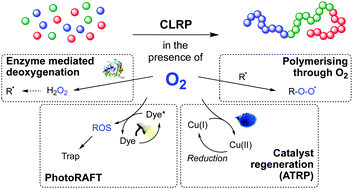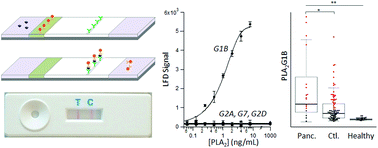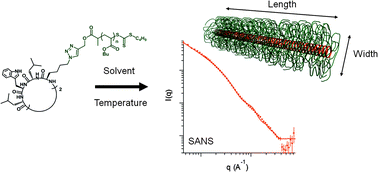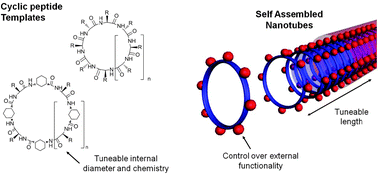Chapman Group
Chapman Group

Dr Robert Chapman: I completed a BEng in Industrial Chemistry (2002-07) at UNSW with a co-operative scholarship. After a year working in management consulting for the Boston Consulting Group, I moved to the University of Sydney for my PhD in Chemistry (2009-12) under Profs. Sebatien Perrier and Katrina Jolliffe, where I studied the synthesis and self assembly of cyclic peptide - polymer conjugates. I subsequently worked as a research associate in the lab of Prof. Molly Stevens at Imperial College London (2013-15) on the development of nanomaterial based biosensors and scaffolds for tissue engineering, before returning to the School of Chemistry at UNSW as a Vice-Chancellors Research Fellow in 2016, and DECRA fellow in 2017.
Current students:
Ahmed Mustafa (PhD)
Yiping Wang (PhD)
Daniele Melodia (PhD)
Alicia Cheng (Honours)
Henry Foster (Undergrad)
Research Interests
Interested in joining the group?
I work closley with Martina Stenzel's group in the school of chemistry. Please contact me by email if you are interested in joining the group. Further information on the application process and available scholarships can be found at the Graduate Research School website, and at the UNSW research scholarships website.
Scientia PhD scholarships are now open for applications. The link to my project is here - please register your interest through this link.
Selected Publications
Please refer to my researchgate or google scholar profile for an up to date list of publications. Selected papers are listed below to give a flavour of the research I am involved in.
- Yeow J, Gormley AJ, Chapman R, Boyer C; 'Up in the Air: Oxygen Tolerance in Controlled/Living Radical Polymerization', Chemical Society Reviews, 2018, ASAP, http://pubs.rsc.org/en/content/articlelanding/2018/cs/c7cs00587c#!divAbstract
- Gormley AJ, Yeow J, Ng G, Conway O, Boyer C,* Chapman R;* 'An oxygen tolerant PET-RAFT polymerisation for screening structure-activity relationships', Angewandte Chemie Int. Ed., 2018, 57 (6), 1557-1562, https://onlinelibrary.wiley.com/doi/abs/10.1002/anie.201711044

- Yeow J, Joshi S, Chapman R, Boyer C; A Self-Reporting Photocatalyst for Online Fluorescence Monitoring of High Throughput RAFT Polymerization, Angewandte Chemie Int. Ed., 2018, ASAP, https://onlinelibrary.wiley.com/doi/abs/10.1002/anie.201802992
- Chapman R,* Melodia D, Qu JB, Stenzel MH, 'Controlled poly(olefin)s via decarboxylation of poly(acrylic acid)', Polymer Chemistry, 2017, 8, 6636-6643, http://pubs.rsc.org/en/Content/ArticleLanding/2017/PY/C7PY01466J#!divAbstract
- Qu JB, Chapman R, Chen F, Lu H, Stenzel MH; 'Swollen Micelles for the Preparation of Gated, Squeezable, pH-Responsive Drug Carriers', ACS Adv. Mater. Int. , 2017, 9, 13865-13874

- Chapman R; Gormley AJ; Stenzel MH; Stevens MM, 2016, 'Combinatorial Low-Volume Synthesis of Well-Defined Polymers by Enzyme Degassing', Angewandte Chemie Int. Ed., 55, 4500 - 4503, http://dx.doi.org/10.1002/anie.201600112
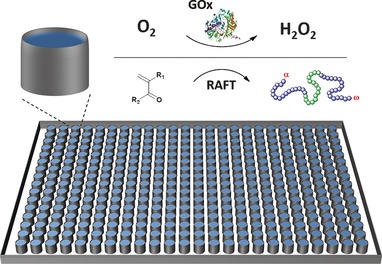
- Liu NJ; Chapman R; Lin Y; Bentham A; Tyreman M; Philips N; Khan SA; Stevens MM, 2016, 'Phospholipase A2 as a point of care alternative to serum amylase and pancreatic lipase', Nanoscale, 8, 11834 - 11839, http://dx.doi.org/10.1039/C6NR03376H
- Chapman R; Lin Y; Burnapp M; Bentham A; Hillier D; Zabron A; Khan S; Tyreman M; Stevens MM, 2015, 'Multivalent Nanoparticle Networks Enable Point-of-Care Detection of Human Phospholipase-A2 in Serum', ACS Nano, 9, 2565 - 2573, http://dx.doi.org/10.1021/nn5057595

- Gormley AJ; Chapman R; Stevens MM, 2014, 'Polymerization Amplified Detection for Nanoparticle-Based Biosensing', Nano Letters, vol. 14, pp. 6368 - 6373, http://dx.doi.org/10.1021/nl502840h

- Chapman R; Koh ML; Warr GG; Jolliffe KA; Perrier S, 2013, 'Structure elucidation and control of cyclic peptide-derived nanotube assemblies in solution', Chemical Science, vol. 4, pp. 2581 - 2581, http://dx.doi.org/10.1039/c3sc00064h
- Chapman R; Jolliffe KA; Perrier S, 2013, 'Multi-shell Soft Nanotubes from Cyclic Peptide Templates', Advanced Materials, 25, 1170 - 1172, http://dx.doi.org/10.1002/adma.201204094
- Chapman R; Danial M; Koh ML; Jolliffe KA; Perrier S, 2012, 'Design and properties of functional nanotubes from the self-assembly of cyclic peptide templates', Chemical Society Reviews, 41, 6023 - 6023, http://dx.doi.org/10.1039/c2cs35172b
- Chapman R; Jolliffe KA; Perrier S, 2011, 'Modular design for the controlled production of polymeric nanotubes from polymer/peptide conjugates', Polymer Chemistry, 2, 1956 - 1956, http://dx.doi.org/10.1039/c1py00202c

